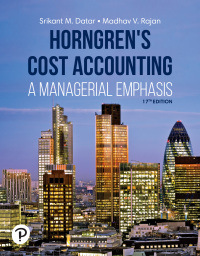Question
You are a junior accountant, recently employed by RM Resources Ltd., a public company traded on the Toronto Stock Exchange that reports under IFRS. The
You are a junior accountant, recently employed by RM Resources Ltd., a public company traded on the Toronto Stock Exchange that reports under IFRS. The company is based in Alberta and it operates two divisions: an oil and gas exploration division, and a heavy equipment manufacturing division. The company is aggressively pursuing overseas partners who could provide further financing to expand operations into Asia.
You arrive at work on a Monday morning in early January, 2020 and receive the following email: To: Junior Accountant
From: Controller
Re: Preparation for annual audit
I am preparing the working papers for the December 31, 2019 year-end audit to present to the company's auditors when they arrive late next week. In reviewing the draft financial statements and other information, I have identified a number of issues that need to be addressed:
1) Inventory Errors: in reviewing the documentation obtained during the December 31, 2019 inventory count for the heavy equipment division, I discovered a number of errors. The details are provided below.
a)We received an invoice from a supplier on January 3, 2020 for goods purchased with a cost of $61,000. This invoice was entered into our accounts payable system on that date. The goods were shipped by the supplier on December 26, 2019 and were received by us on January 3, 2020. The invoice terms were 2/10, n30, FOB shipping. These goods were a special order for one of our customers, and we sold the goods to the customer on January 7, 2020 for $93,000. These goods were not included in the December 31 inventory count.
b)During the inventory count, the supervisor noticed a box labeled "Return for Credit" sitting in the receiving bay. These goods were not included in the inventory count, as the box was sealed and the supervisor did not know what to do with them. On January 4, 2020, the box was opened and the goods were counted. Goods with a total cost of $16,000 were returned to inventory, but additional goods with a cost of $2,000 had to disposed, as they were damaged beyond repair. Credit memos were issued to customers on January 4, 2020 for $24,000.
c)Included in the inventory count were goods with a cost of $11,000, which were waiting to be picked-up by the freight company for delivery to a customer. The terms were 1/10 net 30, FOB shipping. The goods had been invoiced to the customer on December 31, 2019 at $14,000.
d)An invoice from a supplier for $6,000 was received and entered into the accounts payable system on December 31, 2019. The terms of the invoice were 2/10 n30, FOBdestination, and the goods were not received until January 2, 2020. The goods were not included with the inventory count.
2)On December 2, 2019, one of the oil and gas division's wells exploded. It leaked a significant amount of oil into a nearby stream until it could be repaired. The repair was completed on December 27, 2019, but remediation of the site has just begun. It cost $800,000 to repair the well, as a number of attempts initially failed, and new components had to be fabricated to replace the damaged parts. Our CEO issued a press release soon after the explosion, stating that the company will bear the full cost for cleaning up the damage and returning the site to its original condition. It is estimated that it will cost between $2 million to $4 million to fully remediate the site. The process of remediation will likely take several years, as the process of cleaning up the site and the nearby waterway is complicated. We need to determine how to account for the repair costs, how to account for the expected restoration costs, and whether we need to assess the asset for impairment.
3)During the exploration of a different well site, the oil and gas division discovered a significant amount of gold. The division is now mining and selling the gold. We are trying to decide how to account for the gold inventory. We are considering reporting the gold inventory at its net realizable value once it has been refined, even though it has not yet been sold. We are not sure if this accounting treatment is acceptable.
Before I finalize the working papers for the auditor, the Chief Financial Officer has requested I summarize the key financial reporting issues. Where possible, he would also like to know the potential impact of the issue on the balance sheet and income statement, and he would like an explanation why an adjustment is required. If there are areas where judgment is involved or the accounting treatment is not clear, he would like to know the alternatives that are available and factors that need to be considered in choosing an alternative.
I am away on a conference this week. Please provide a memo to me by next Monday that addresses the issues identified above. I will then provide a report to the Chief Financial Officer.
Required:
Prepare the requested memo to the controller. (30 marks)
Step by Step Solution
There are 3 Steps involved in it
Step: 1

Get Instant Access to Expert-Tailored Solutions
See step-by-step solutions with expert insights and AI powered tools for academic success
Step: 2

Step: 3

Ace Your Homework with AI
Get the answers you need in no time with our AI-driven, step-by-step assistance
Get Started


